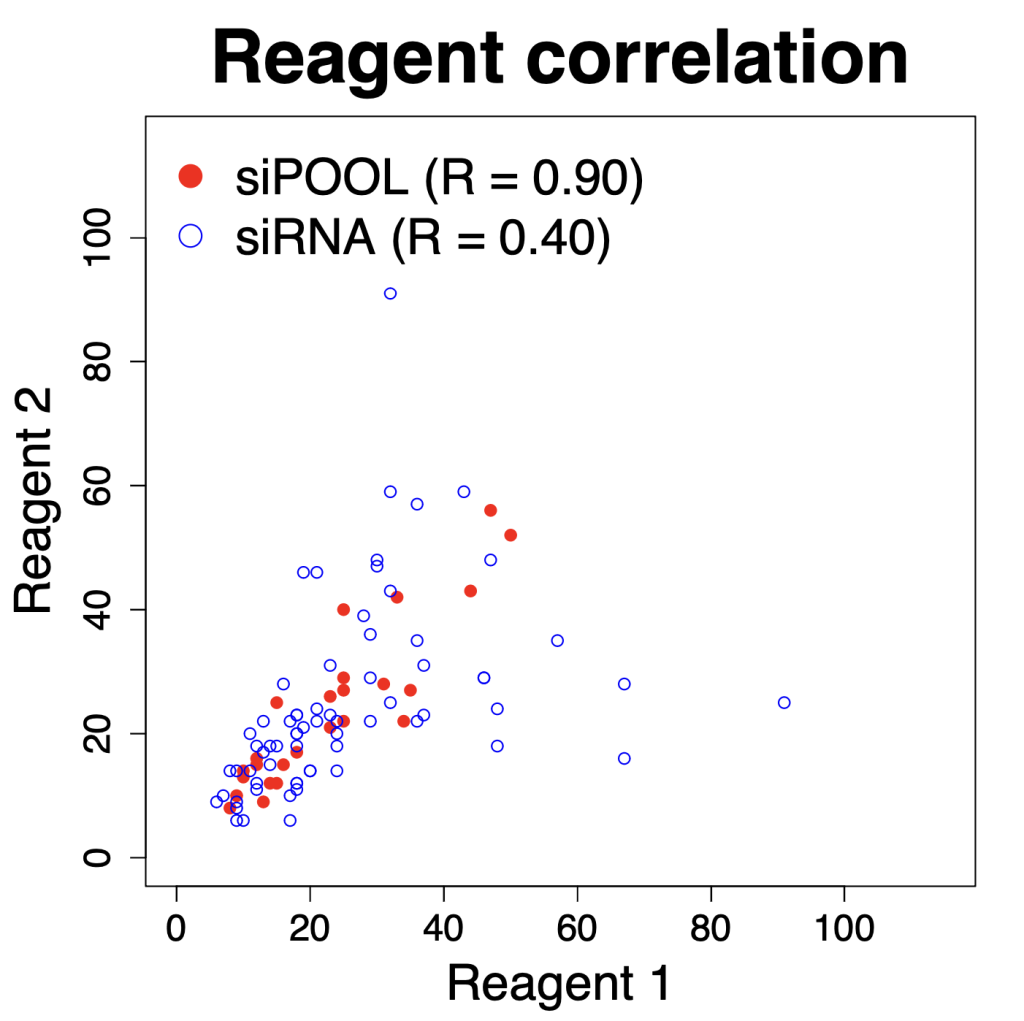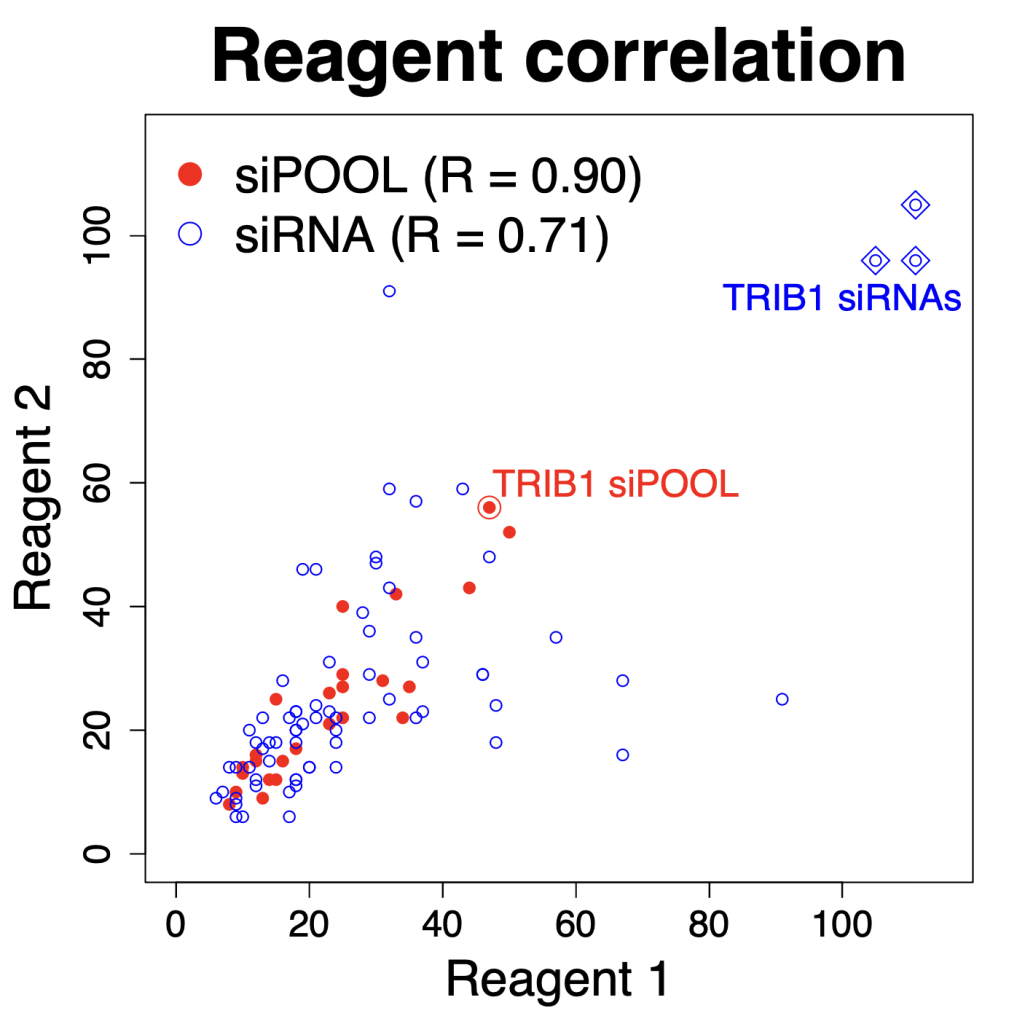
siPOOLs: robust reagents for gene silencing
Although we talk a lot about off-targets, one of the main advantages of siPOOLs (complex siRNA pools) compared to single siRNAs or mini-pools (Dharmacon) is that they provide near optimum silencing of target genes. Two siPOOLs for the same gene give very similar knock down levels, and their silencing is around the best of any single siRNA. Given how many candidate siRNAs there are for a gene, and how difficult it is to accurately predict silencing levels, this makes siPOOLs the best choice for gene silencing.
The following plot, comparing independent siPOOLs and siRNAs for the same target gene, shows that siPOOLs for the same gene give more similar silencing than do siRNAs (these are Ambion Silencer Select siRNAs).

We see that the correlation for independent siPOOLs is nearly twice that for independent siRNAs.
(Note that for siRNAs we are doing all pairwise comparisons for 3 siRNAs per target gene. Randomly selecting 2 siRNAs per gene gives similar R values.)
In the above plot, we removed 3 siRNAs that did not work, for the gene TRIB1. TRIB1 has some association with the nucleus and has a short mRNA half life, both of which are factors associated with poor gene silencing.
The following plot shows the TRIB1 siPOOLs and siRNAs.

Note that including these non-functional siRNAs actually improves the reagent correlation, though not for a good reason!
We also see that independent TRIB1 siPOOLs give very similar silencing and it’s much better than for the siRNAs. In our experience, if a siPOOL does not work well for a gene, designing a second siPOOL does not substantially improve things, as the poor silencing is normally a feature of the target gene itself. ~50% silencing is probably about the best one can expect for this gene.
Just because siRNAs do not give any on-target silencing, this does not mean they can’t show up as hits in screening assays. Because most of the downregulation is in off-target genes (due to the seed effect), each of those TRIB1 siRNAs may silence nearly 100 genes.
We looked at a genome-wide RNAi screen that included these 3 Silencer Select siRNAs. We see that one of them gives a fairly strong phenotype (Z-score < -2 for cell count), even though the siRNAs do not silence their on-target gene.

Screening with siPOOLs is the smarter alternative, as you can be confident that they provide near optimal on-target silencing and have less off-target effects.





